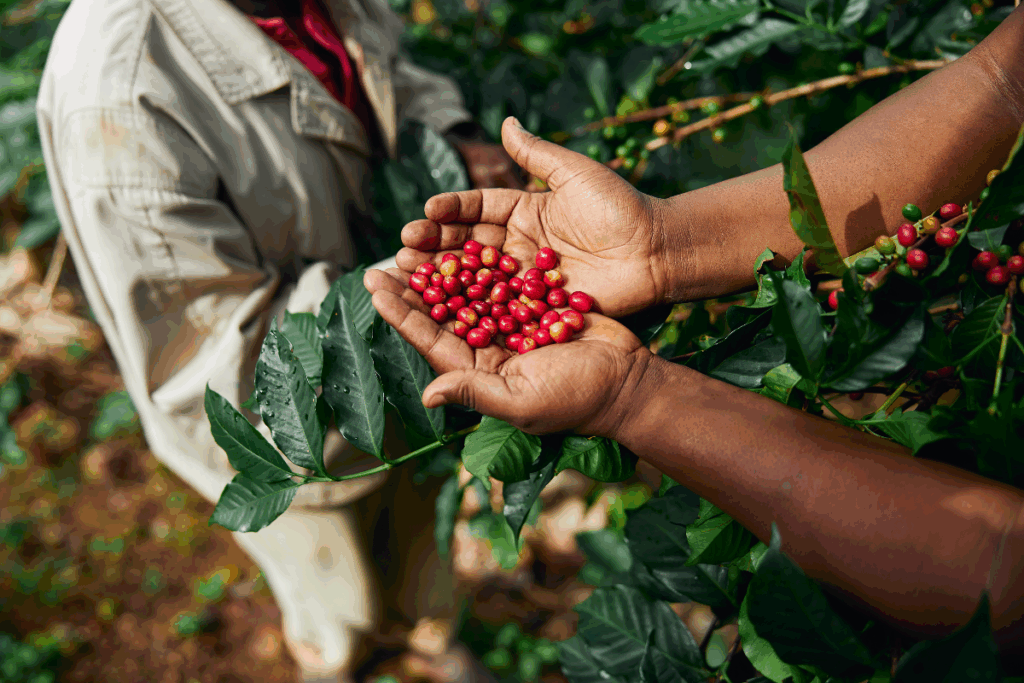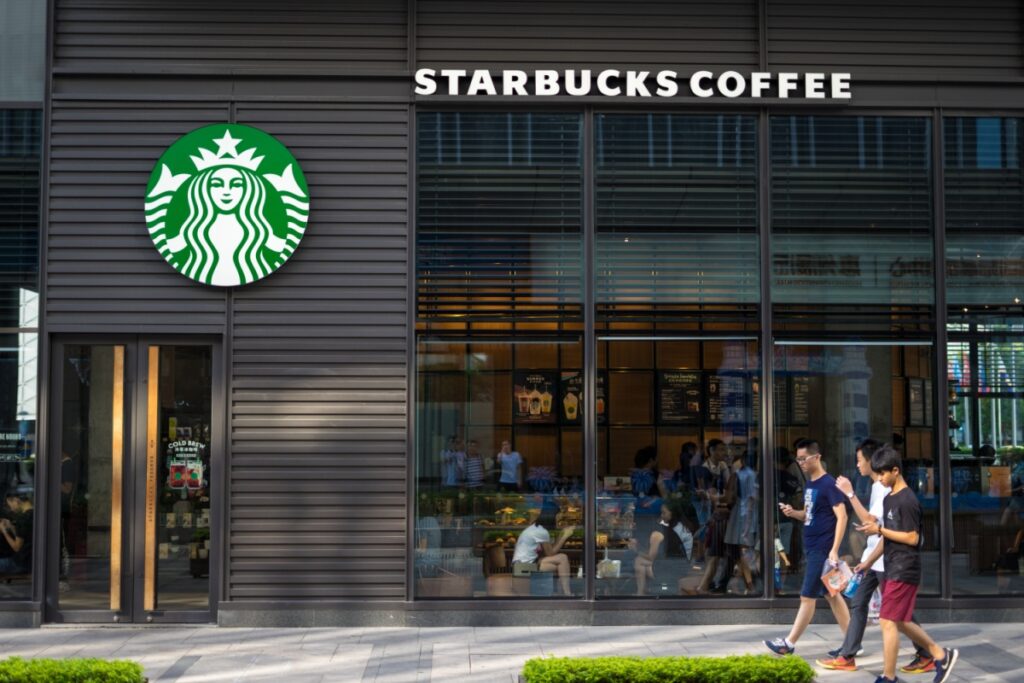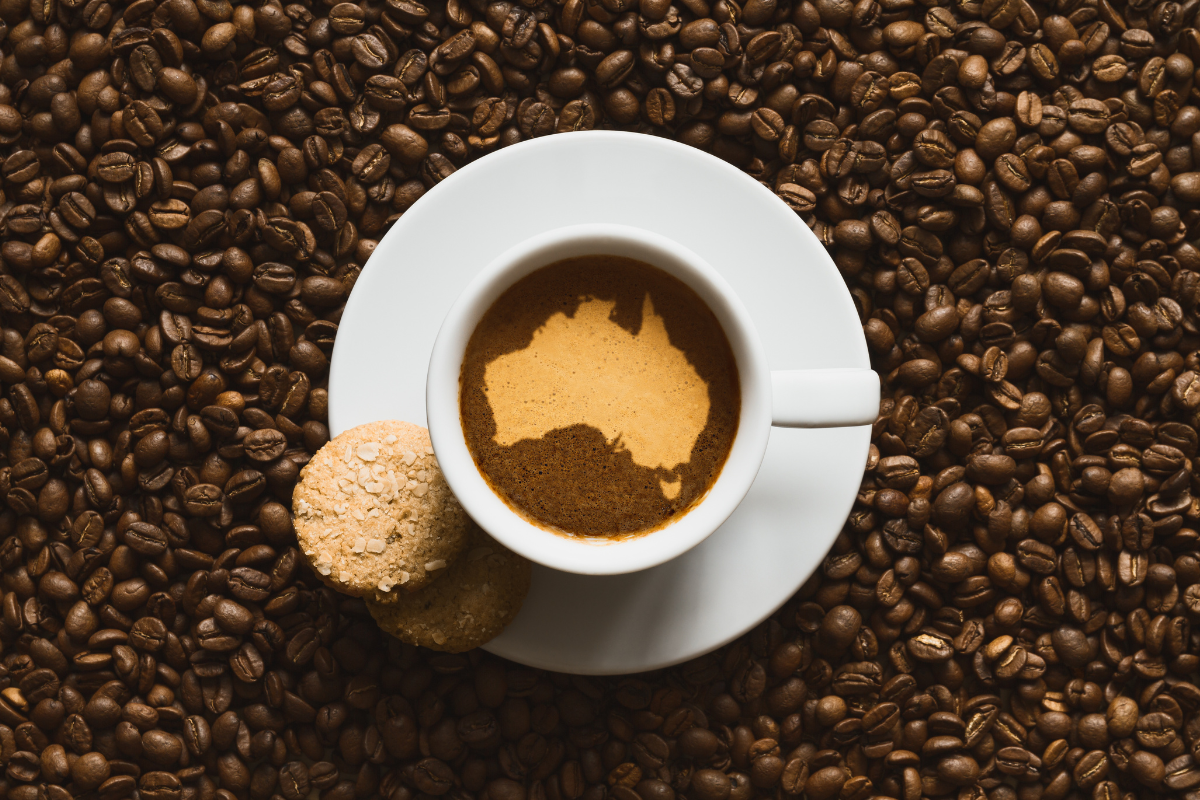Aussies could be facing the prospect of $12 coffees in the near future, according to analysts.
We’ve all probably felt our morning coffee starting to bite into our budgets more than normal. While the price has been increasing for the last few years—much of it driven by the double whammy COVID-19 shocks to supply chains and rapidly rising inflation—there is fresh concern that the price of coffee could explode even further in the coming years.
If these dire predictions come to pass, the idea of affordable coffee would be over.
So, what is happening to the price of coffee?

Man calculating the cost of coffee. Photography by mapo_japan via Shutterstock
The past few years has seen a huge increase in the price of coffee. A report by La Marzocco into the future of coffee in Australia found that that average price of a cup of joe has gone up to $5.50, up 37.5% from the start of the pandemic when it averaged just $4.00.
And this price only gets worse for the major cities. In Melbourne, where coffee is a secular religion, the average coffee in the city will set you back $6.00, while in Syndey you can expect to pay between $6.50 and $7.00.
And unfortunately, it doesn’t look like the cost is going down anytime soon. In fact, some analysts expect the price of a coffee to go up to $12 on average by the end of the year if trends continue.
But why is coffee getting more expensive now?

African worker gathering coffee beans. Photography by Yaroslav Astakhov via Shutterstock
The short answer: climate change. Rising temperatures and a changing environment are making it harder and harder to grow the bean. As a result, major coffee producing nations including Brazil, Columbia and even Australia have seen their coffee output impacted by local weather conditions. In fact, as temperatures continue to rise, some research has found that entire coffee varieties could become extinct.
Yet there are other reasons at play. China—which for centuries has had a deep relationship with tea— as well as other Asian markets are developing a taste for coffee that is shaking the coffee bean trade.

Young Chinese men walking past Starbucks, China. Image via Shutterstock
While China remains the largest producer and consumer of tea in the world, coffee has become trendy among younger generations. The launch of international chains like Starbucks and local brands like Luckin Coffee have also helped fuel this growth, as 78% of coffee consumers in China were aged 18-44. With fewer coffee beans going around yet demand stronger than ever, it’s not hard to see a problem.
The type of coffee Australians buy also helps explains some of the increase. From artisanal blends to slow brews to boutique coffee beans, Australians have been eager to abandon the instant coffee of yesteryear for the more rich, flavourful blends that dominate your local cafes. This more expensive taste, however, does mean that on average the cost of a coffee has gone up as a result.
Add on the increased cost of shipping, global instability, and a weak Aussie dollar, the rising cuppa cost becomes much more understandable.
Are we really looking at $12 coffee?

Industrial coffee machine. Photography by Jodie Johnson via Shutterstock
“It’s important to acknowledge that coffee prices are going up, and I’m not opposed to that, but numbers need to be based on real factors, not arbitrary figures,” said Kirk to Bean Scene Magazine.
The two pointed out that beans make up only about 12 to 15% of the total cost of coffee, with the rest being a combination of milk, packaging, labour, rent and other business expenses.
“Coffee producers and coffee shop owners understand the cost-of-living crisis better than anyone, no one’s out there hoping for $12 lattes.”
With increasing prices across the board, it’s likely we see new budget coffee options emerge to help people get their caffeine fix without burning a whole in their wallet. Yet no matter how much the price goes up, Australia’s love affair with coffee probably won’t dissuade many from their morning joe.
One way to avoid the pinch of cafe coffees is by brewing at home. Here is out guide to make the perfect cup of coffee right from your own kitchen. And for your next cafe escapade, enjoy your next brew with a good read at Australia’s 10 best bookstore cafes to read at.


